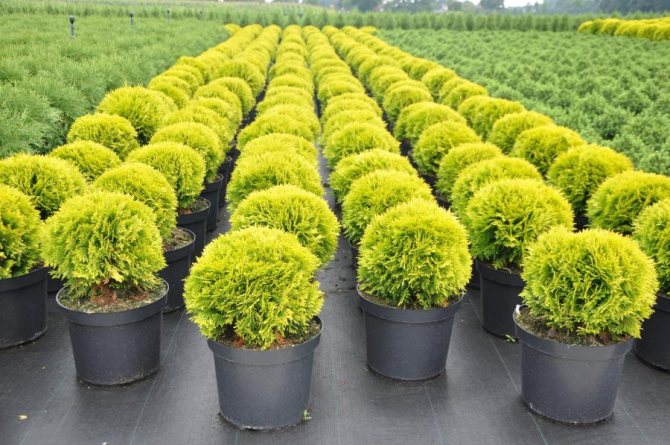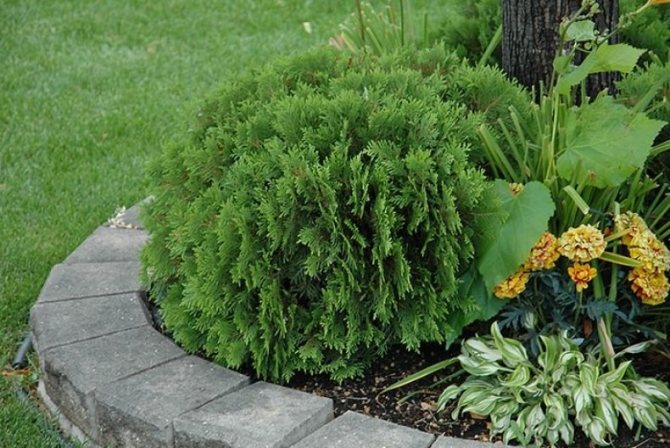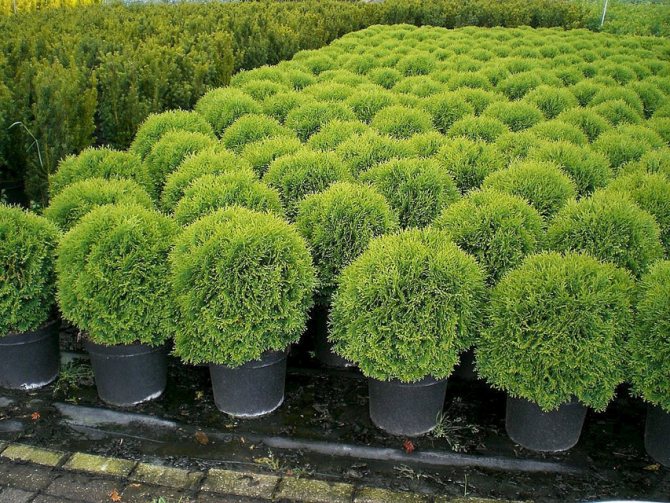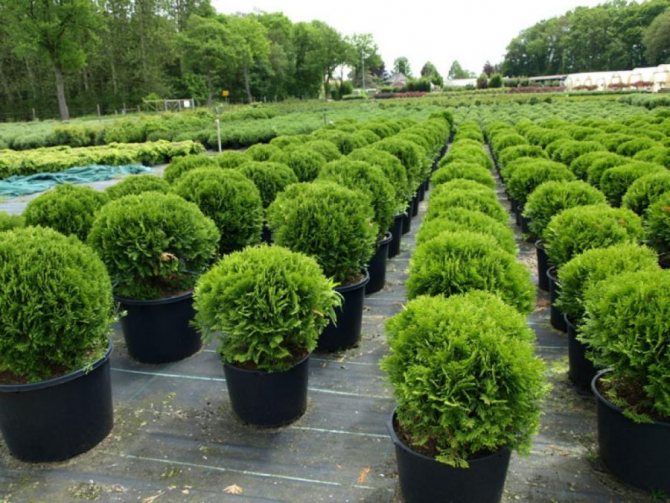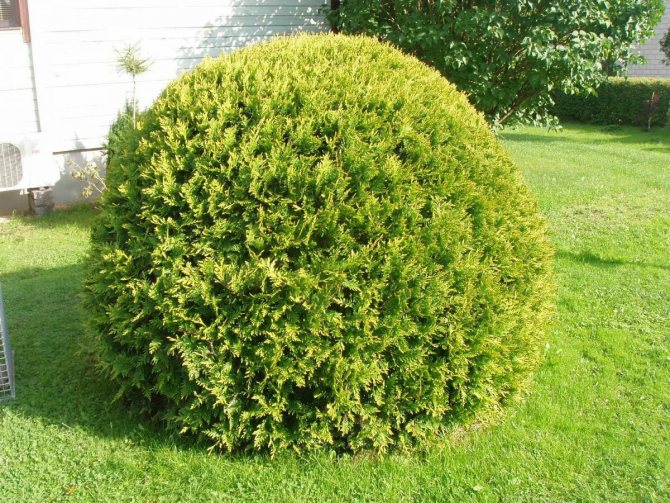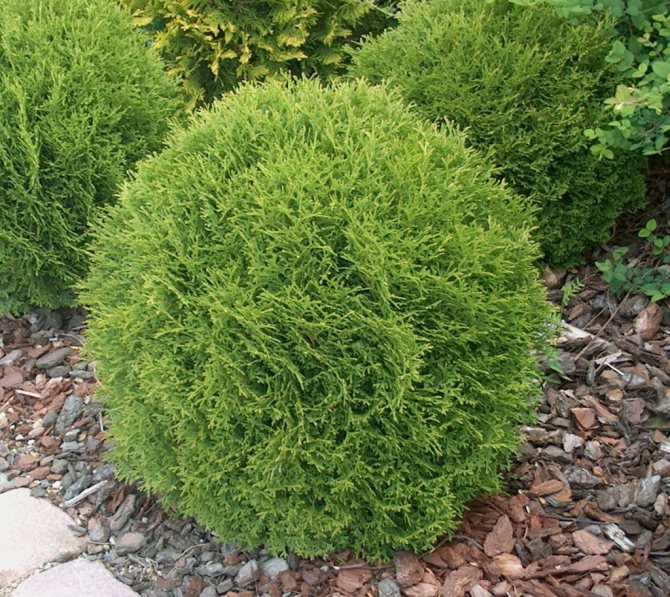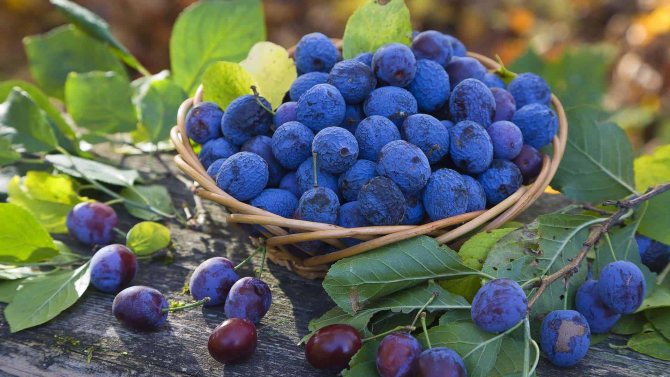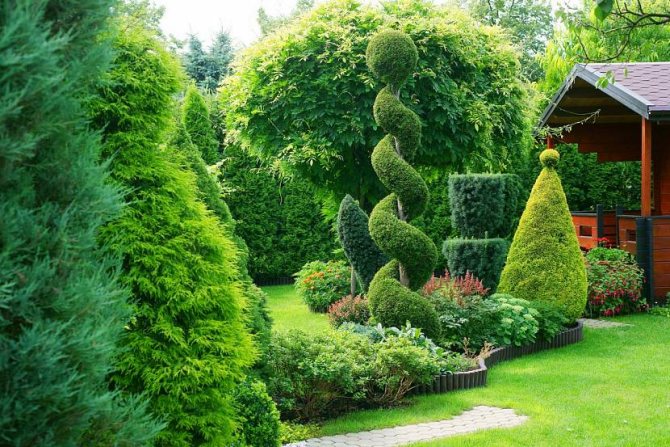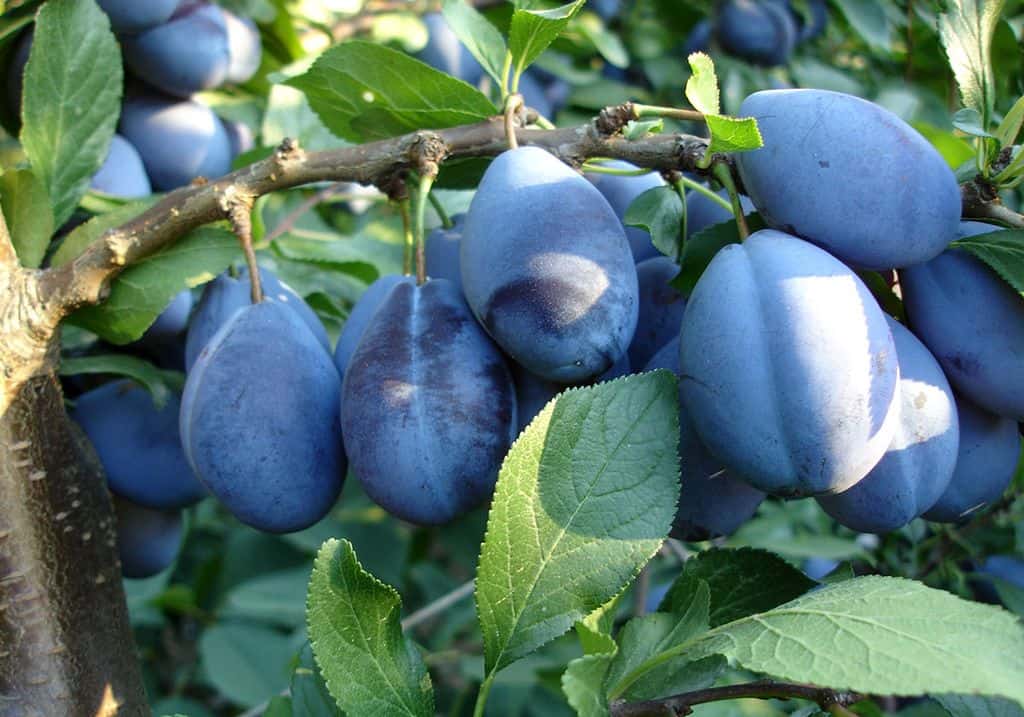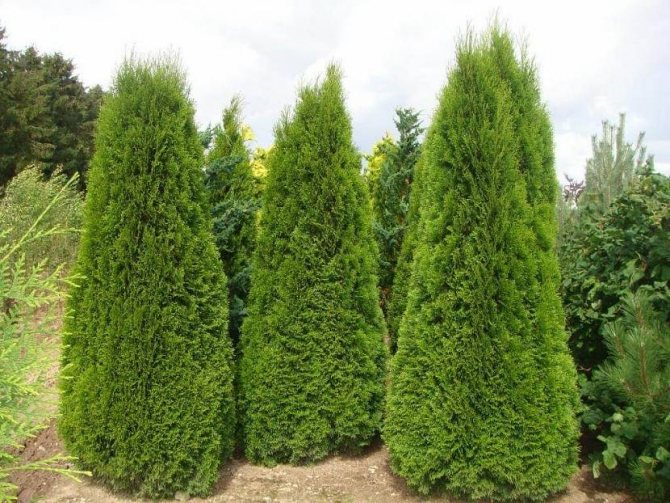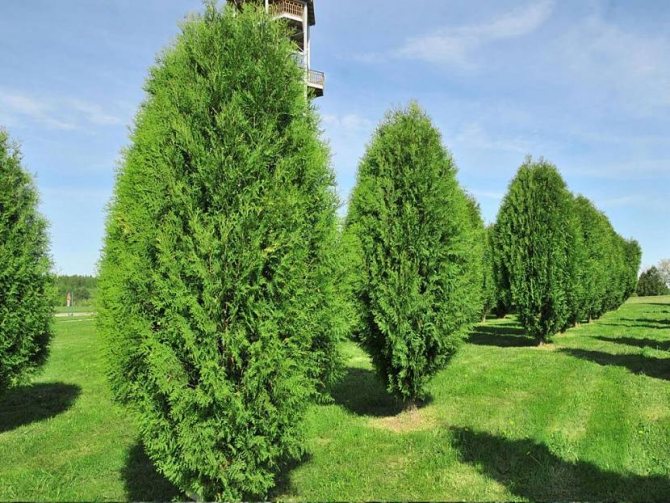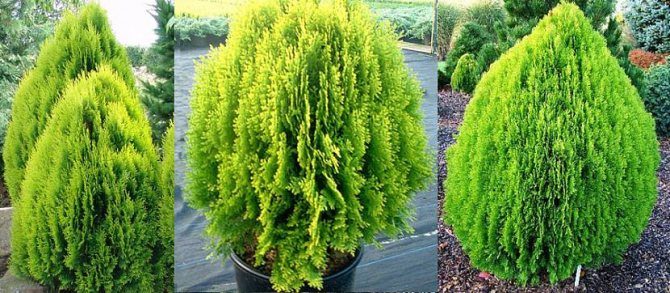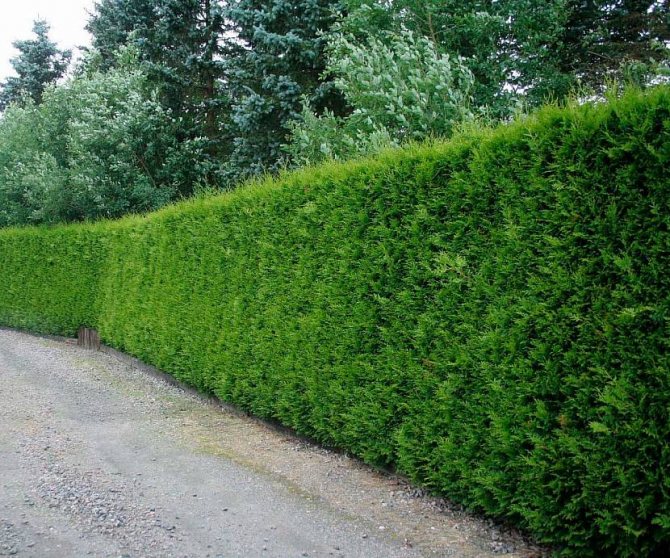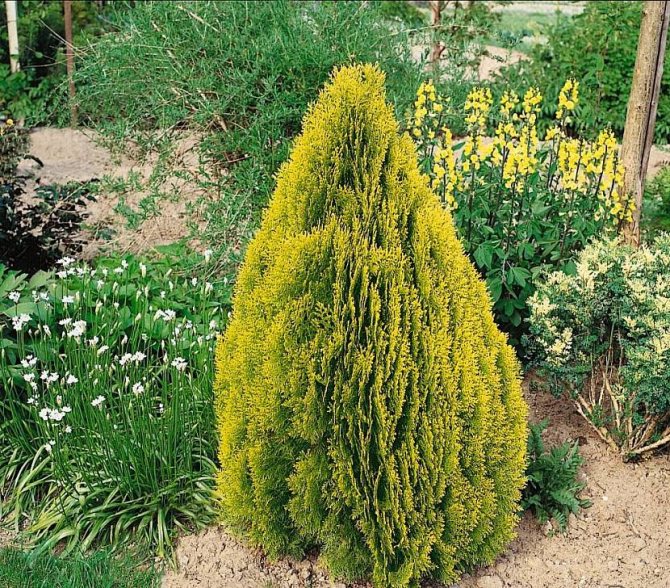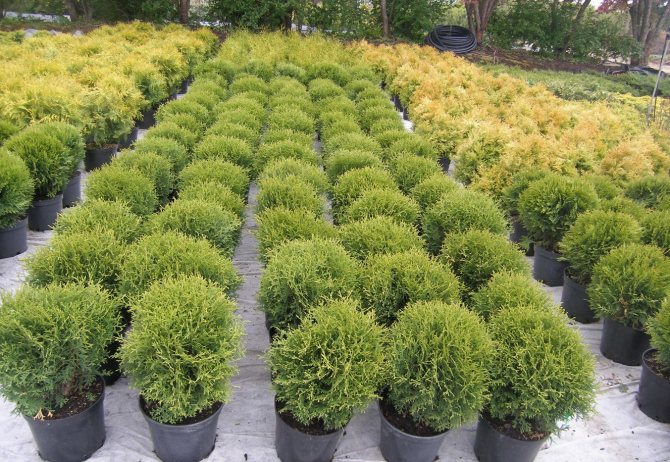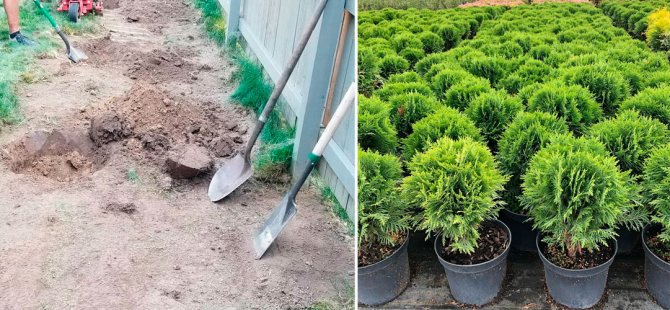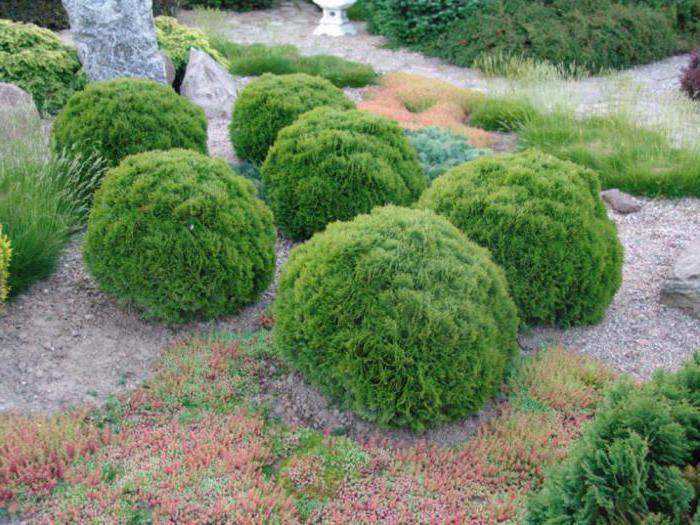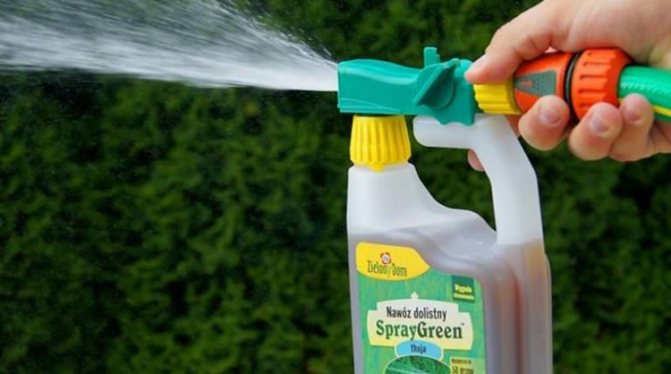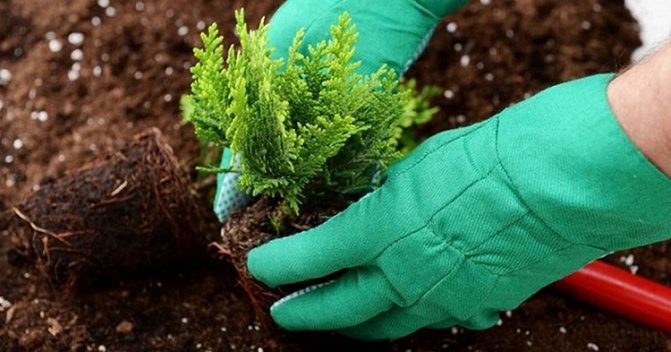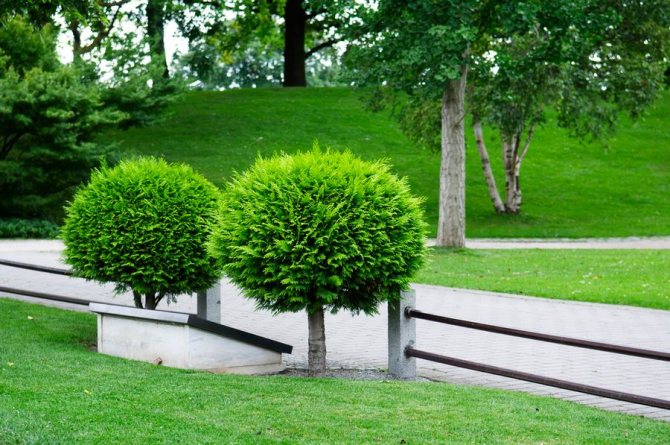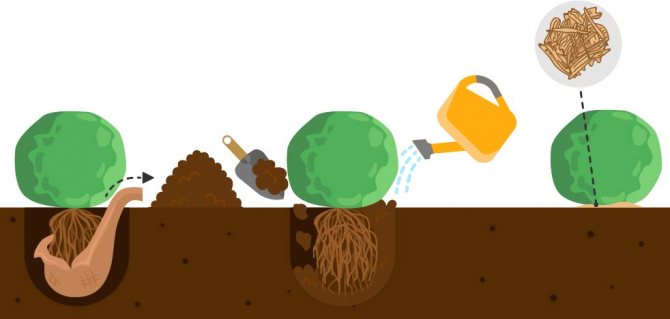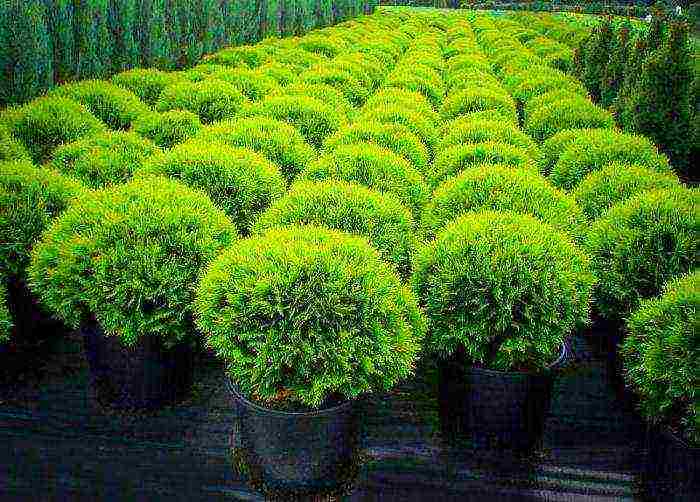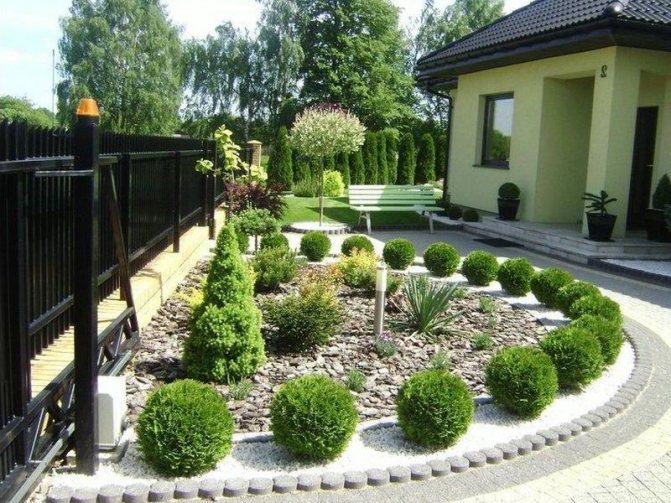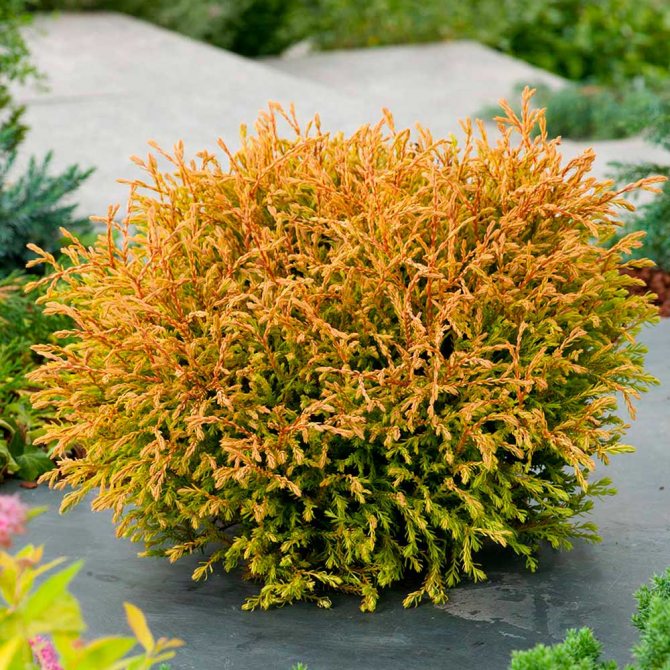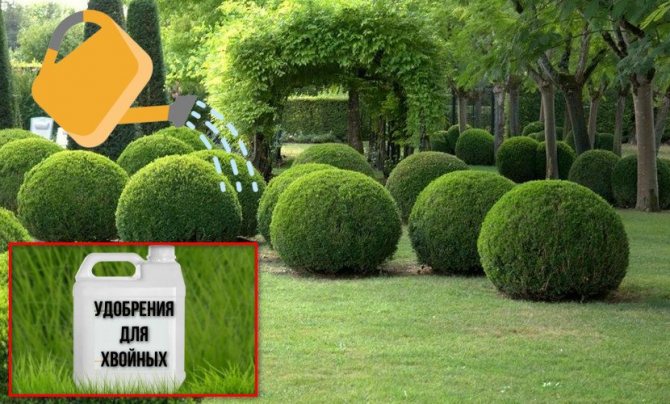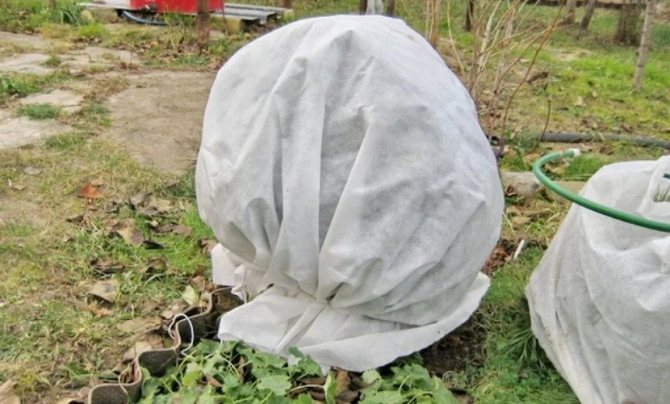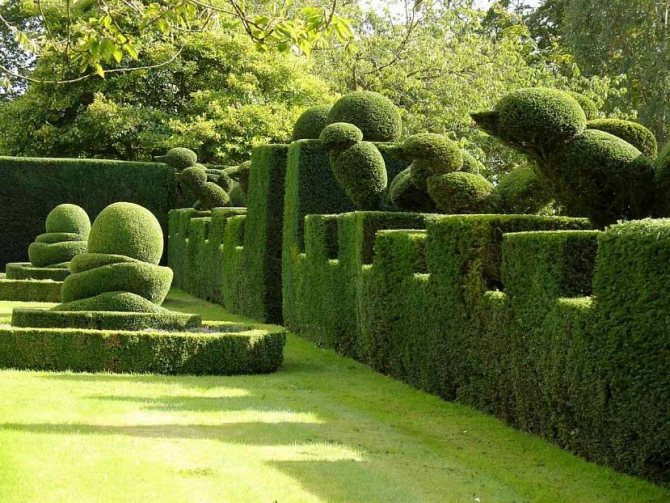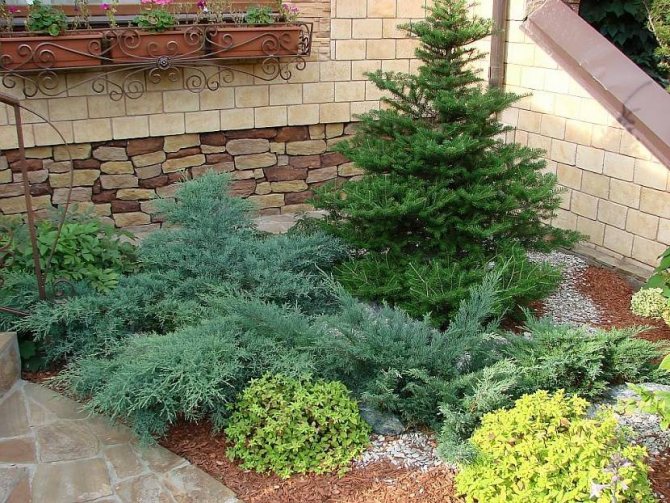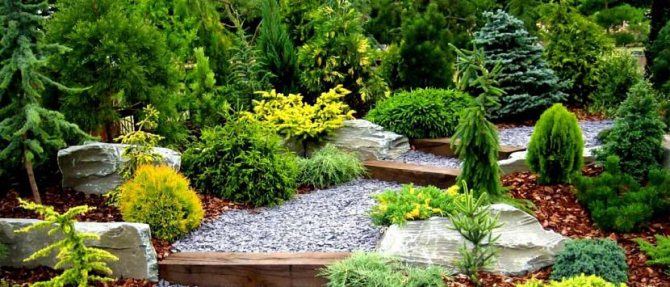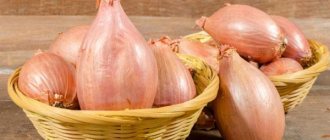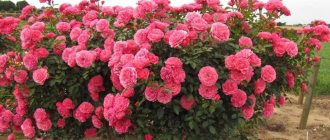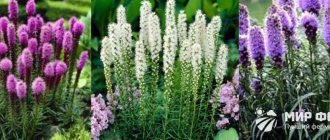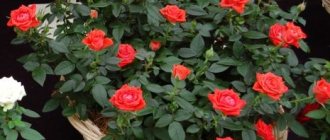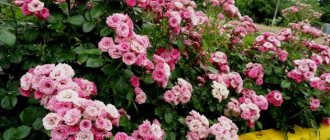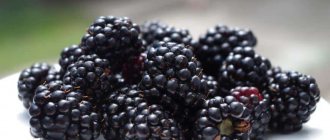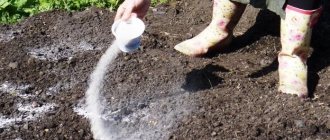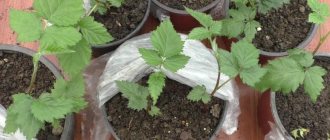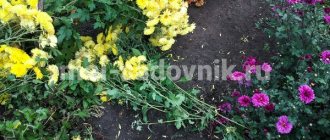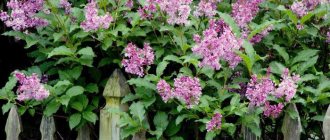Every gardener, amateur or old-timer, tries with all his might to create the perfect landscape design. It is enough to choose a few central elements and your site will sparkle with new colors. It is best to use natural plantings, which will perfectly fit into any composition and fill the garden with the scents of nature. In this case, all gardeners recommend purchasing a thuja - a North American guest, which has taken root well in our territory.
Its spherical shape is also popular - compact and miniature varieties can grow even on small plots of land. Thuja globular, planting and caring for which is practically not difficult, will delight you with green beauty throughout the year and will spread a pleasant aroma of freshness throughout the garden.
In this article, we will consider the features and description of thuja, and also give the main characteristics of the species and varieties of thuja globular. Let's note the important nuances of planting and caring for this plant.
Features and description of thuja globular
Thuja is an evergreen plant that belongs to the large genus of gymnosperms and is a member of the Cypress family. Together with thuja, this family includes such plants as juniper, cypress, cypress, sequoia. Thuja globular is a variety of thuja, therefore, it also belongs to this family, only to its dwarf forms. This evergreen plant is not a natural inhabitant of our climatic zone. In nature, dwarf spherical thuja is found only in North America and in some regions of East Asia. The spherical thuja were brought to Europe from these places, after which they became widespread throughout all European countries and on the territory of Russia.
Thuja has the Latin name Thuja, the meaning of which carries ancient Greek roots. Translated, it means "sacrifice", "incense". This is primarily due to the smell that aromatic thuja breeds exude during ritual burning, which was ubiquitous in those distant years. Even now, modern varieties of thuja globular spread a pleasant coniferous aroma throughout the site, for which this evergreen plant is valued by gardeners.
Thuja globular has long become a favorite plant among the owners of their own plots, since it is this evergreen beauty that fits perfectly into any landscape composition and does not require much effort and knowledge when planting and caring for it. Therefore, we can say. that thuja globular in the garden is one of the most beautiful and at the same time simple and irreplaceable plants.
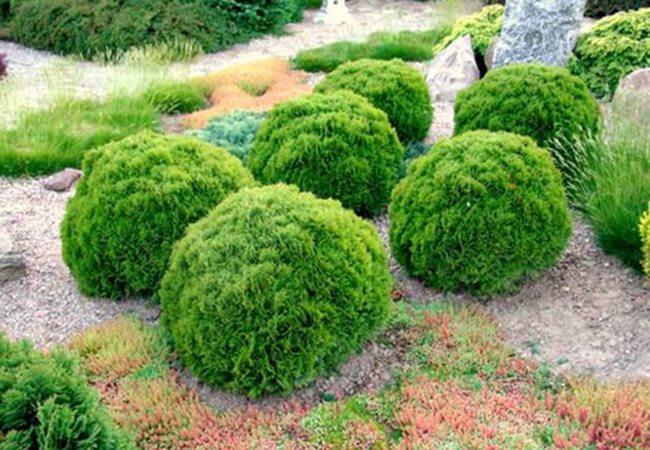
Description of thuja globular:
- Like the whole genus, thuja globular belongs to the Cypress family and is an evergreen coniferous plant.
- All varieties of western thuja globular differ in very slow growth, and therefore they live in one place for a very long time. Some individual plants can grow up to 150 years in one place, which will allow you not to think about a permanent transplant.
- In height, individual trees of thuja globular can reach 50 cm, and the maximum is only 2-2.5 m, which allows them to be planted near the house and not be afraid that over time these evergreen beauties will grow strongly.
- Thuja of this variety have a beautiful and symmetrical spherical shape, which allows this plant to look gorgeous in any garden arrangement and facilitates the process of tree pruning.
- The needles of a young spherical thuja are very soft and needle-like, but with age they become more rigid and scaly. In length, one needle reaches 7 cm.
- The color of the thuja needles is light green or dark green, it all depends on the particular plant variety. There are varieties with yellow-green needles or even brown.
- The needles on the plant last for about 3 years, after which they fall off.
- Already in the first year after planting on a spherical thuja, fruits can ripen, which are oval or oblong seed pods with small flat seeds. During the ripening period, they are green, and then they turn brown.
- Each scale contains two seeds.
- Thuja globular is distinguished by its unpretentiousness, which is why this evergreen plant has taken root so well in our gardens. All types of spherical thuja are cold-resistant, frost-resistant, smoke-resistant and shade-tolerant. Therefore, it will not be difficult to grow such a plant on the territory of Russia.
- This type of plant perfectly tolerates the polluted air of the city, therefore, it is excellent for landscaping city streets.
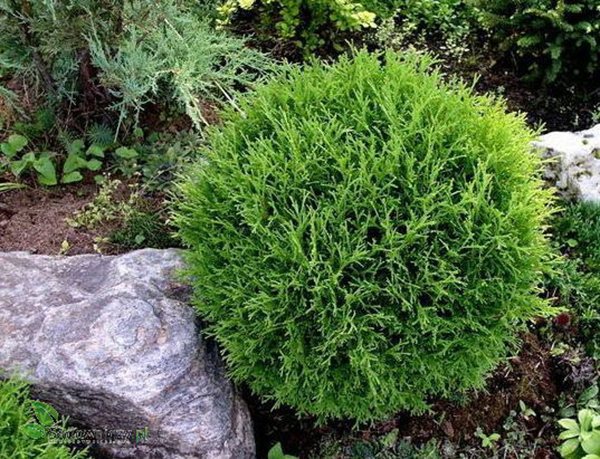

Types and varieties
This plant is widely used in landscape design. Thuja globular has been actively cultivated for over a hundred years. During this time, breeders around the world were actively engaged in the development of new varieties with their own characteristics. The following is about the most popular of the globular thuja varieties.
Danica
Thuja Globoza (Globosa) western spherical - description
The bush has the shape of a slightly flattened ball. This spherical thuja grows up to 80 cm, and the width of the crown has a diameter equal to one meter. The plant reaches its maximum height at the age of 15.
Note! The variety was bred by Danish breeders at the beginning of the last century. He can decorate not only a park, but also a small garden.
Golden Globe
It is relatively easy to grow this variety due to its unpretentiousness. Golden Globe is a dwarf shrub that grows at a slow rate. Thuja needles spherical have a bright green color that attracts attention. The spherical shape of the crown remains throughout the life of the shrub.
Globoza
Thuja Globoza has been cultivated since 1874. The height of the plant does not exceed one and a half meters. Visually, this variety of thuja looks like a ball. It looks a bit like a juniper.
Important! Round thuja is decorated not with needles, but with soft scales that are pleasant to the touch.
Tinny Tim
This variety is in good harmony with various landscape compositions. Breeders have developed this variety in such a way that it has a very slow growth rate. Scaly needles with a gray-green color. It remains constant regardless of the season. Shoots have the ability to branch well.
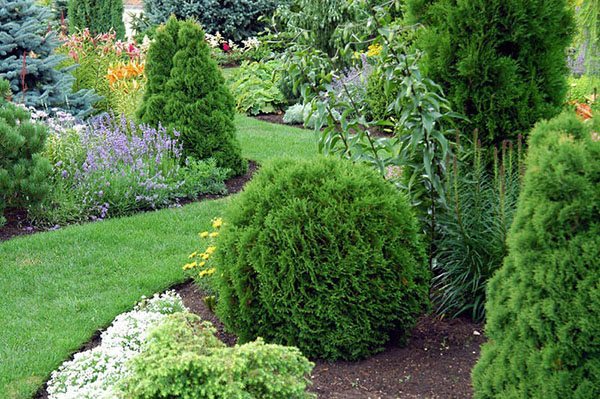

Tinny Tim's use in landscaping
Teddy
In a shrub, the crown has a spherical shape. Tuya Teddy is a long-liver, her age can reach a hundred years or more. Small needles on thin shoots have a bluish-green tint. The roots are widely branched, they are found in the upper layer of the soil.
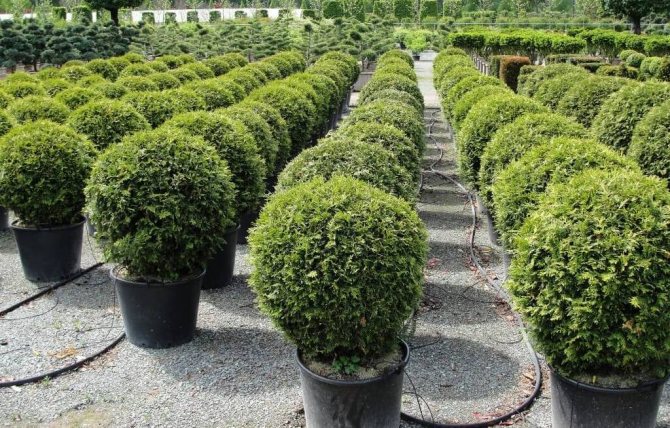

Thuja Teddy's roots are shallow, so you should be careful when weeding
Miriam
The height of this yellow spherical thuja reaches 0.8 m. Its crown is also 0.8 m wide. In a year, the shoots grow by 5-10 cm. The needles have a golden green color. In winter, the color changes to yellow-orange. In spring, thuja Miriam regains its former color.
Note! The shrub is known for its bactericidal properties. The phytoncides that it secretes are capable of killing pathogens.
Woodwardy
The needles have a rich color that persists constantly.The crown of young plants has a spherical shape, then gradually stretches out. The shrub reaches half a meter in height over a ten-year period. This variety is characterized by high frost resistance and is able to grow in most of the territory of Russia.
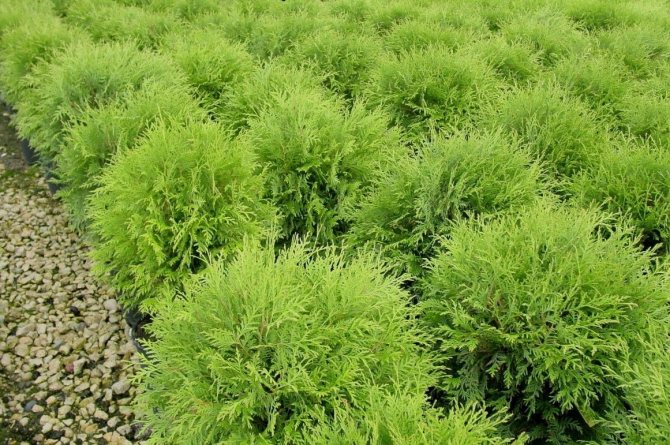

Thuja Woodwardi grows up to 1.5 m
Bodhi
This variety is relatively tall. Tui Bodhi's description says that it can grow up to 3 m in height. This plant has a high winter hardiness. In landscape design, they are usually used for single plantings or as a background.
Reproduction of thuja globular: the most common ways
Thuja globular is a very popular plant in gardens, which is why it is so important to know all the breeding methods of this evergreen beauty. You can independently breed a spherical seed method, cuttings and dividing the bush. Having mastered the breeding technique, you can easily grow a whole hedge from this beautiful plant.
Seed propagation of thuja globular
- This breeding method is used extremely rarely, as it is rather long and in the end you may not get exactly what you expect.
- Seed propagation is used by breeders to develop new varieties, and at home only species of thuja can be bred with seeds. When planting, for example, a spherical Danica thuja, you can get a completely unpredictable crown shape and color of needles.
- However, with this method, you will definitely get more hardy seedlings.
- When planting thuja seeds, you will receive young seedlings only after 3-4 years.
- First of all, it is necessary to collect spherical thuja seeds. To do this, it is important to wait until the fruits of the plant ripen, after which they are plucked and transferred to a warm, dry room.
- After about 3 days, the buds will open and you can get the seeds.
- Before placing the seeds in the soil, they must be soaked in water for 12 hours.
- Next, it is important to carry out a stratification process that will allow the seeds to germinate faster. To do this, wet seeds are placed in sand, moistened and placed in the refrigerator until spring.
- In the spring, you can start sowing seeds of thuja globular.
- It is necessary to plant in open ground in previously prepared beds. In this case, the embedment depth should not exceed 0.5 cm.
- After planting, the crops are watered and mulched with sawdust.
- It is important to cover the beds with sun shields.
- During the first season, seedlings sprout about 7-8 cm, and by the third spring they can reach 50 cm. It is at this time that young seedlings of spherical thuja can be transplanted to a permanent place.
- With this method, you can get half of the seedlings with a columnar crown, and half with a spherical crown.
Thuja propagation by spherical cuttings
- This method is the most suitable for the reproduction of spherical thuja, since it does not take much time and does not require a lot of work.
- First of all, you need to prepare cuttings as planting material. It is recommended to do this in July or August.
- Choose lignified shoots of the last year, 30-40 cm long, or young shoots of this year, 15-20 cm long, on an adult bush.
- You cannot cut the cuttings, they must be plucked together with the heel. Thus, the cuttings will take root better.
- Further, all the cuttings in the lower part must be cleaned of needles, after which it is recommended to lower them for several hours in Kornevin's solution or another root-forming agent.
- At this time, you need to prepare an earthen mixture in the greenhouse, into which the cuttings will be planted. To do this, take equal parts of turf, peat and sand and spill everything well with a weak solution of potassium permanganate.
- Next, cuttings are planted to a depth of 2-3 cm, and the plantings themselves are well covered with a film.
- During the rooting of cuttings, it is important to maintain a high humidity at all times. To do this, it is recommended not to water the soil, but to spray water over it.
- It is also important to constantly air the plantings.
- In the fall, be sure to cover all the cuttings with foil and spruce branches.
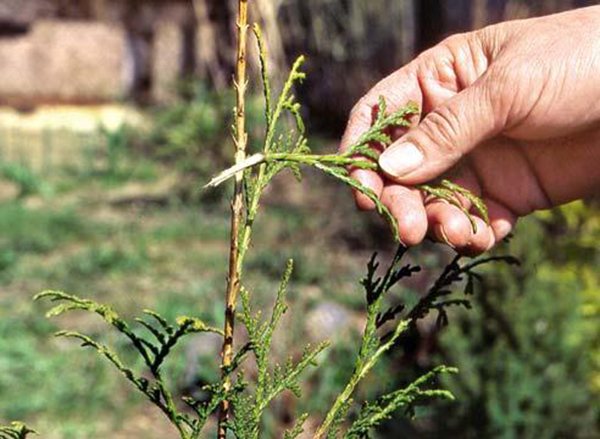

Species affiliation
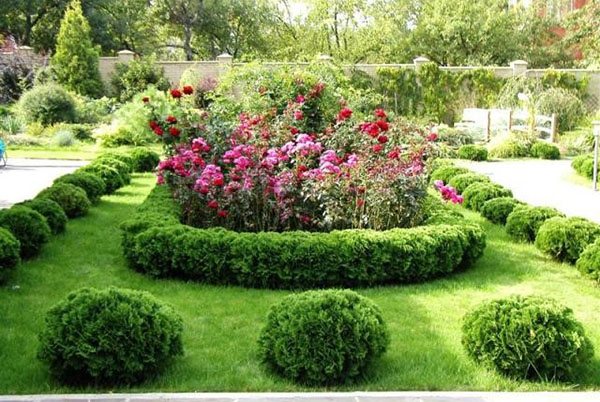

- Thuja western spherical unpretentious and suitable for growing in our country.
- The varietal variety of this species is so great that from the available varieties, you can choose a suitable option. In addition, the selection of new varieties continues to this day.
Spherical forms are found among other types of thuja (Japanese, Korean and others), but these varieties are difficult to grow in our climatic conditions outdoors. Further recommendations for care relate specifically to the globular varieties of western thuja.
Preparation before planting thuja globular in the garden
In order to get a beautiful and well-groomed evergreen thuja, it is important to carefully prepare before planting. And although the shrub itself is not picky and can grow anywhere, it is important to create the most acceptable growth conditions for it. First of all, it is important to purchase healthy and high-quality spherical thuja seedlings of the variety you need, as well as to choose the most suitable place for planting on your site.
Stage 1. Selection of variety and seedlings of thuja globular
- The growth rate and the future appearance of the plant will depend on the correctly selected spherical thuja seedling.
- It is important to purchase seedlings only in specialized nurseries or garden centers that are professionally involved in the cultivation of various plants.
- You can buy seedlings both in spring and autumn. Although many gardeners recommend planting plants in the spring.
- It is important to purchase seedlings only in containers with a closed root system, since with open roots you risk acquiring a non-viable plant.
- When choosing a spherical thuja variety, be guided by the size of the site where you are going to plant the plants. However, in any case, all varieties are compact in size.
- Also, be sure to buy seedlings that have already reached 7-9 years of age. Younger plants can take a long time and take root.
- Before buying plants, be sure to check the appearance. The needles should be free of visible damage and dry areas. Also, there should be no signs of various diseases and the presence of pests. The soil in the container should also be kept well-groomed.
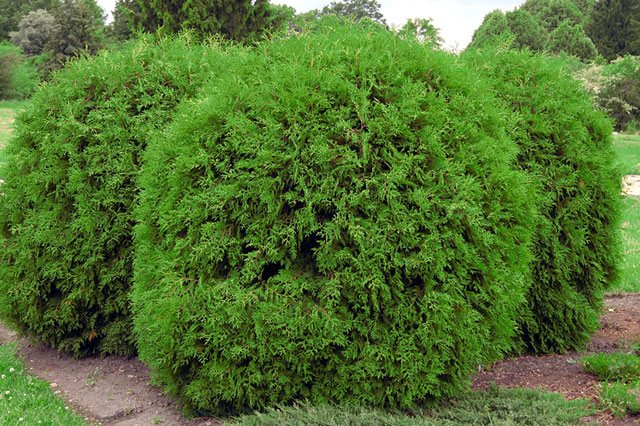

Stage 2. Choosing a place for planting a spherical thuja
- It is also important to find the optimal place for planting spherical thuja seedlings.
- All varieties of this plant prefer an open and spacious place, where there is not a lot of plantings.
- It is also important that evergreen beauties get enough sunlight, but full sun throughout the day is bad for them. The needles can burn out.
- A small shade is also suitable for thuja, but you should not plant it in full shade. This can cause the needles to become dull and slow down the growth of the plant.
- Thuja categorically cannot stand spherical drafts and strong winds, therefore it is important to plant seedlings in a protected place.
- The planting site must be selected depending on the planned garden composition. Rockeries, alpine slides, lawns and places along curbs and garden paths are perfect for this plant.
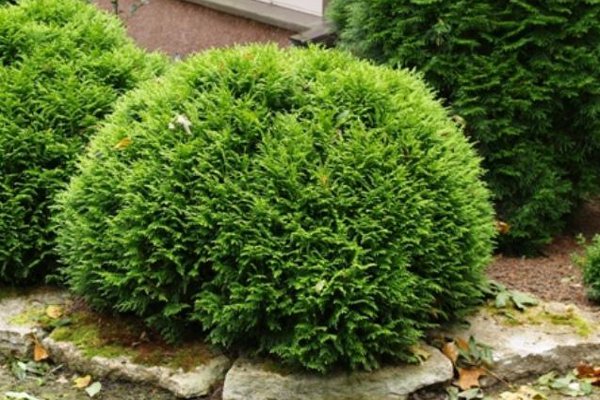

Stage 3. Selection and preparation of soil for planting spherical thuja
- Thuja seedlings spherical do not tolerate prolonged stagnation of water in the ground, so it is important to prepare good drainage.
- All varieties of thuja prefer to grow on fertile soils, if your land is poor, you can add a little complex mineral fertilizer.
- You need to prepare a place for landing in advance. To do this, carefully dig up the selected place, about 1 bayonet of the shovel, loosen it well and level it.
- In about 2 weeks, it is important to dig a hole for planting a spherical thuja seedling.
Globular beauty varieties
Golden Globe is a very beautiful thuja, which can often be found in the decoration of terraces. Its needles are golden in color, and in the fall it begins to cast copper.This beauty grows slowly, it can be planted on a loggia or on a roof. To grow thuja, you need to provide it with moist air.
Danica is a miniature (up to 50 cm) thuja. Its needles remain green all year round. And the bark has a reddish brown tint. Can be planted in small areas.
Tini Tim is a globular thuja with feather-shaped leaves. It is recommended to plant in groups. Unpretentious in terms of soil, but needs the sun.
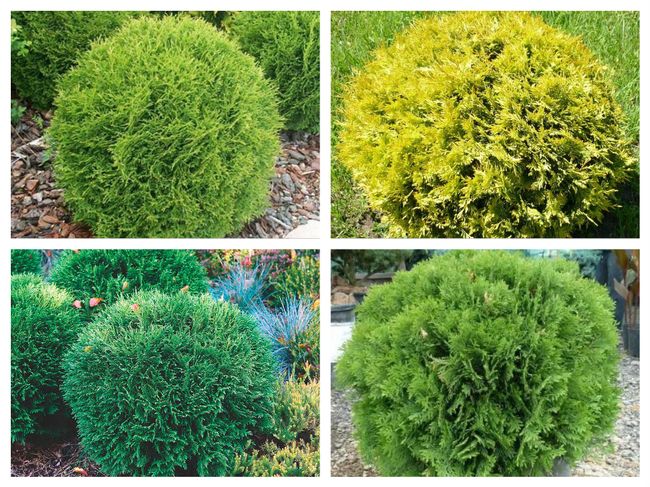

Globoza - reaches one and a half meters in height. The needles, depending on the season, are green and green-brown. Moisture resistant plant.
Miriam is the owner of a bright green crown in spring. Differs in a symmetrical shape. Loves the sun, regular watering. This variety is most suitable for creating a Japanese garden.
Teddy is a unique variety, recently bred. The crown is dense, dense. Quite a capricious variety: it does not like dry air, it is picky about the type of soil, it needs constant feeding. It grows slowly, becoming brown in winter.
Woodwardy is an unpretentious variety. Grows well in shaded areas. Forms small bumps.
Thuja spherical planting technology
- It is best to plant thuja in a spherical spring, so the plant will have time to take root before the onset of frost.
- 2 weeks before the planting time, carefully prepare the selected site and dig the planting holes.
- The size of the pit will depend on the particular thuja variety and the size of the root system. On average, the depth of the pit should be about 60-80 cm.
- If you are planting several plants side by side, it is important to maintain the optimum spacing between them. It should be at least 1 meter, since the root system of plants grows in a horizontal direction.
- Dig holes and the resulting soil must be mixed in equal proportions with turf soil, sand and peat. You can also add a little fertilizer here.
- If the site is in a low-lying area or clay predominates in the soil, it is important to make good drainage. Gravel, broken brick or small stones are perfect for drainage. The drainage layer should be about 20 cm.
- Before planting, water the seedling pot with abundant water and carefully remove the plants, being careful not to damage the roots.
- Place the seedlings in the planting holes so that the root collar is flush with the soil.
- Sprinkle the seedlings with soil and lightly tamp with your hands, then pour well with water.
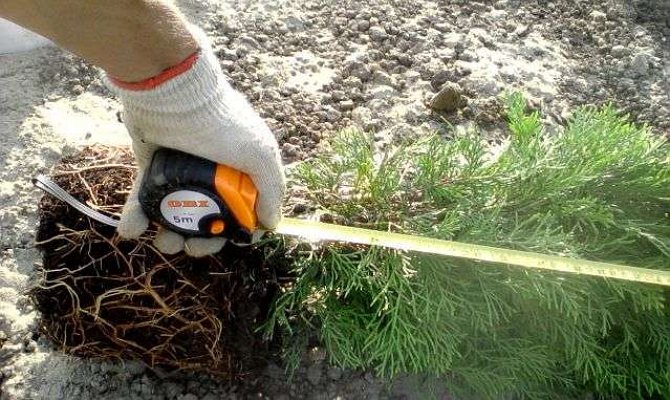

Landing patterns
Thuja can be located in any convenient place on the site. But some schemes can help create beautiful compositions or plant a hedge correctly.
When registering a certain part of the site, use:
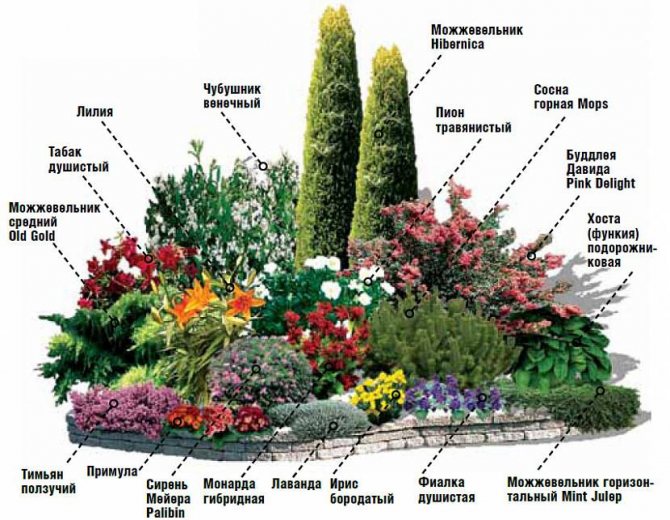

Coniferous compositions: scheme Source www.pinterest.de
- Thuja Globosa.
- Thuja Selena.
- Cedar Korean pine.
- Hemlock.
- Juniper.
- Scots pine.
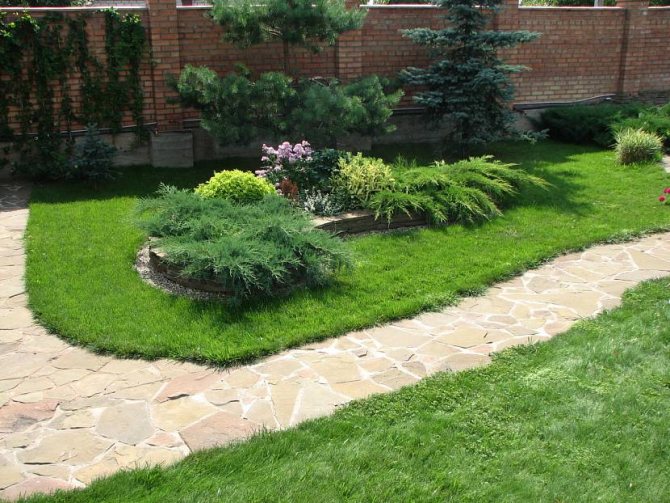

Beautiful coniferous composition Source
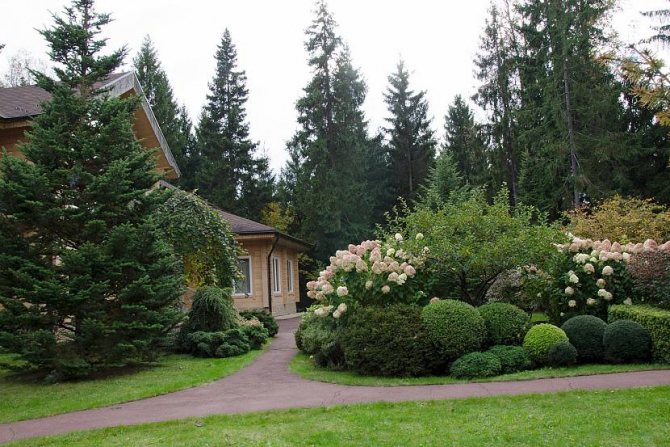

Conifers as a background for flowering Source m-
Agrotechnology for growing thuja globular: secrets and nuances of care
Tui spherical in care is not very demanding, however, you still need to know some of the nuances. This will further provide the plant with optimal conditions for growth and development.
Watering thuja globular
To facilitate the watering process around the seedlings, it is important to make a kind of holes, with the help of which moisture will flow directly to the roots. Immediately after planting, young plants should be watered once a week. However, on dry days, it is recommended to double the amount of watering. On average, one plant should have about one bucket of water, in hot weather it may take up to 20 liters.
Loosening and mulching of thuja globular
Immediately after watering, it is important to loosen the soil around the plants to increase oxygen availability to the roots.However, it must be loosened very carefully, since the root system is very close to the surface and you can damage it. It is also recommended to use a layer of mulch to prevent excessive evaporation of moisture. Peat can be used as mulch.
Top dressing of thuja globular
It is necessary to start feeding young plants of thuja globular only from the second year of life. The plants are fed in the spring. For this, complex mineral fertilizers are used at the rate of 50-60 grams per square meter.
Thuja spherical pruning
Pruning a spherical thuja is an important step in caring for this plant. All varieties of this variety of thuja have a symmetrical and compact crown that responds well to pruning. There is no specific time frame for trimming. However, it is best to do this in the spring before the buds begin to lay. Solitary plants need sanitary and thinning pruning, while hedge plants require formative pruning. It is important to start forming a crown for a plant only when it has reached a certain age. Remember that some varieties require pruning twice a year, and it is recommended that no more than one-third of the shoot should be pruned.
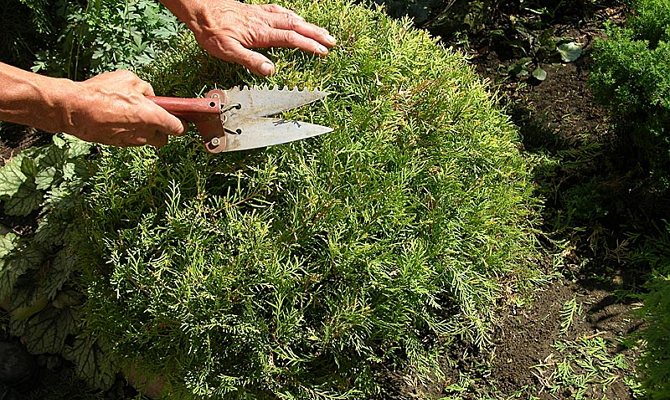

Wintering thuja globular
Young plants need shelter for the winter. To do this, they are covered with spruce branches. It is important to tie up older bushes with twine so that the shoots do not break from the weight of the snow. In the spring, it is important to cover the plants with a covering material.
Possible tree diseases and treatments
Spherical thuja in landscape design unpretentious, since it is not very susceptible to disease. Ailments are caused by unfavorable environmental conditions, fungal infections, insects. Among the latter, spherical thuja harm:
1. Gray leaf beetle. The latter harms the tree at the stage of a yellowish-white caterpillar, after turning into a bloodworm butterfly. Leaf bearer feeds on needles. The insect is destroyed with Bitoxibacillin and Lepidocide. These are insecticides, that is, biologically active preparations that do not accumulate in the soil and do not harm pollinating insects useful for thuja. Of the chemicals, Ditox, Atom and Fufanon are used. Their use is justified when the leaf roll is massive. There must be at least 5 tracks per branch.
2. Click beetles. They are black-brown, about a centimeter long. Tue is harmed by yellow-brown beetle larvae. While in the soil, they eat the roots of the tree. The contaminated soil is sprayed with Fufanon or Decis, and also dug up in the fall. These same methods are preventive.
3. Bark beetles. These beetles are not up to 9 millimeters in length, but often do not exceed 0.5 centimeters. Outwardly, bark beetles are similar to elephants, weevils, but without those very elongated "noses". Beetles penetrate the bark, eating round passages in it. A mature tree can die in a few days. They offer to fight bark beetles with the help of pheromone preparations. They process one tree.
The drug attracts bugs from other bushes to thuja. It remains to cut and burn the bait. Experienced gardeners can use the prick method. An aggregate similar to a syringe is injected into the tree with a solution of mordant. It is important to choose the right preparation, dilute it in the correct proportion, add substances that facilitate the penetration of the stain into the wood tissue. The "syringe" injects a certain pressure in the barrel, promoting the spread of the solution.
4. Aphids. Its thuja variety is grayish-brown, like waxy. The insect feeds on young needles, causing them to turn yellow and fall off. Fight aphids with insecticides or soapy water. The last tree is sprayed, after covering the soil with a film - the soap should not get to the roots.
5. Moth-ring. Its larvae gnaw young shoots. The larvae do not exceed 4 millimeters in length. Tornado and Maxitol help. They need to be sprayed with them 2 times. The interval between them is a week.The affected branches are preliminarily removed and burned.
Insect infestation is often associated with diseases caused by unfavorable environmental conditions. Thuja, for example, does not like acidic soils, withers away in them. Click beetles, on the other hand, flee from alkaline and neutral soil. As a result, the invasion of insects occurs in the same place where the weakened tree grows. He does not have the strength to resist pests. Bark beetles attack the same trees. They love to attack thujas weakened by drought.
Fungal infections also affect trees weakened against the background of unfavorable environmental conditions. The mulberry mushroom, for example, penetrates the trunk through damage on it, dried knots. Mushrooms grown from spores suck juices from thuja. The tree dries up. To prevent this from happening, thuja is sprayed with Bordeaux liquid. The visible bodies of the fungus are cut off along with the branches. Damage found on the tree is cleaned and blocked with a special putty.
Phytophthora also belongs to the fungal ailments of thuja. It develops against a background of high humidity. Therefore, thuja more often suffer in areas with heavy and poorly drained soils. The proximity of groundwater to the surface is another risk factor.
Phytophthora develops in the soil, affecting the root system. Therefore, the base of the trunk of the thuja becomes loose, and the greens become gray. You cannot cure a tree, just dig it up and burn it. The soil is replaced as the spores continue to live in the substrate. For several years, new plants are not planted on the affected area.
Given the danger of phytophthora, gardeners carry out its prevention by spraying the soil with fungicides. Another thuy fungus is shute. It affects young bushes, choosing those that do not have enough food. Eliminate the jester Topsin-M. They spray it on a tree. The preparation is powder, therefore it is preliminarily diluted with water. For 10 liters you need 15 grams of Topsin.
When shute, the needles darken and fall off at the thuja. Rust infestation has the same result. By the way, she also affects young thujas. However, the color of the needles with rust is comparable to the name of the disease. Eliminate it by spraying with HOM. For 10 liters of water, take 40 grams of powder.
Rust develops against the background of a lack of water or, conversely, high humidity. A deficiency of trace elements also becomes the cause of the disease. Therefore, it is important to feed the thuja on time, especially on poor soils.
The use of thuja globular in landscape design
You can clearly see the use of thuyu spherical in the landscape in the photo below.
Spherical thuja is an excellent option for creating a beautiful and vibrant landscape design. This plant does not require much effort from you when planting and caring, but it will delight you with a chic appearance and a wonderful aroma.
What are the spherical conifers remarkable for?
One of the most interesting varieties of thuja is spherical. It attracts gardeners with its neat shape, which is easy to maintain by pruning. Spherical specimens resemble externally low-growing shrubs with a dense crown. The branches naturally fold into a regular ball or cone.
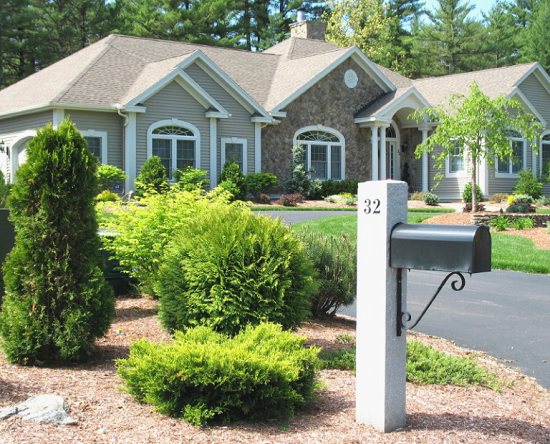

The combination of varieties in landscape design
The bushes have an attractive color throughout the year. This allows you to preserve the decorativeness of plantings throughout the season: in summer, green needles set off the flowering of deciduous ones, and in autumn it takes over the main decorating function. Crohn is not afraid of cropping, even a beginner can adjust the appearance. Some varieties do not require this as the bush forms naturally.
Thuja spherical grows up to several tens of centimeters in height. Crown color varies from deep green to golden. Coniferous shrubs release phytoncides into the atmosphere, which saturate it with a specific odor and cleanse it of harmful microorganisms. Spherical forms can grow on the site for several decades. Western thujas withstand polluted air in urban areas.
Options for garden compositions:
- Thuja is a coniferous tree that goes well with other thorny cousins, deciduous and grasses. The composition includes flowering annuals and perennials. Plants are usually planted in a group, creating a dense hedge or curb. The needles look great on rocky areas.
- For an ensemble with thuja on an alpine slide or mixborder, roses can be chosen.
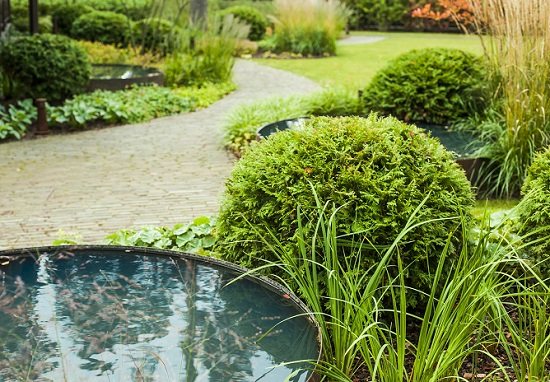

Coniferous ball near an artificial reservoir - It is not recommended to plant spruce, fir and pine nearby, as they will oppress their neighbor. Various samples of western thuja, Lawson's cypress or Cossack juniper quickly take root together.

